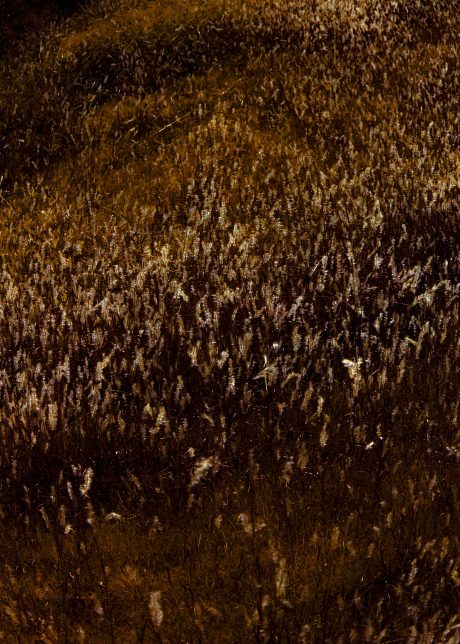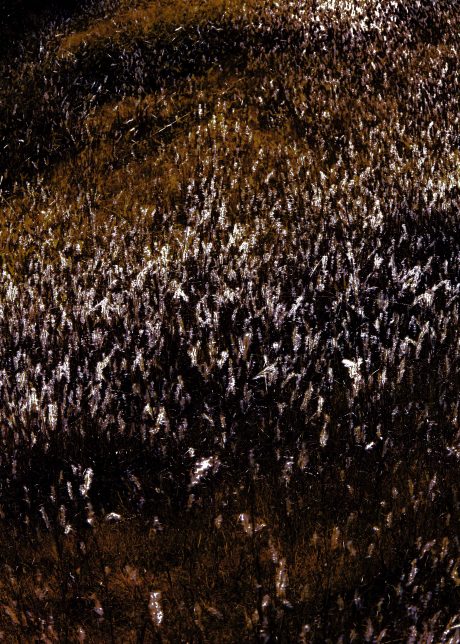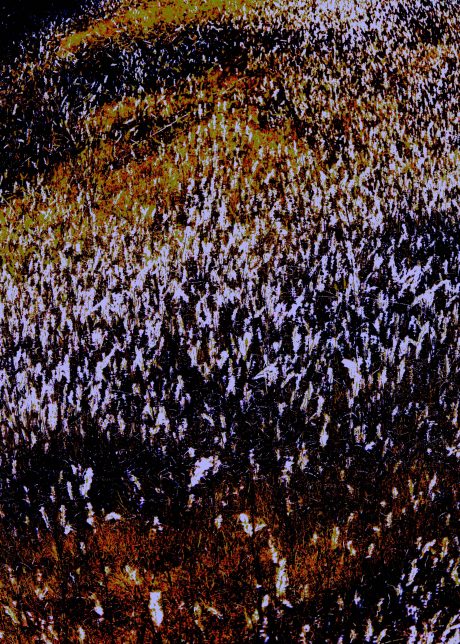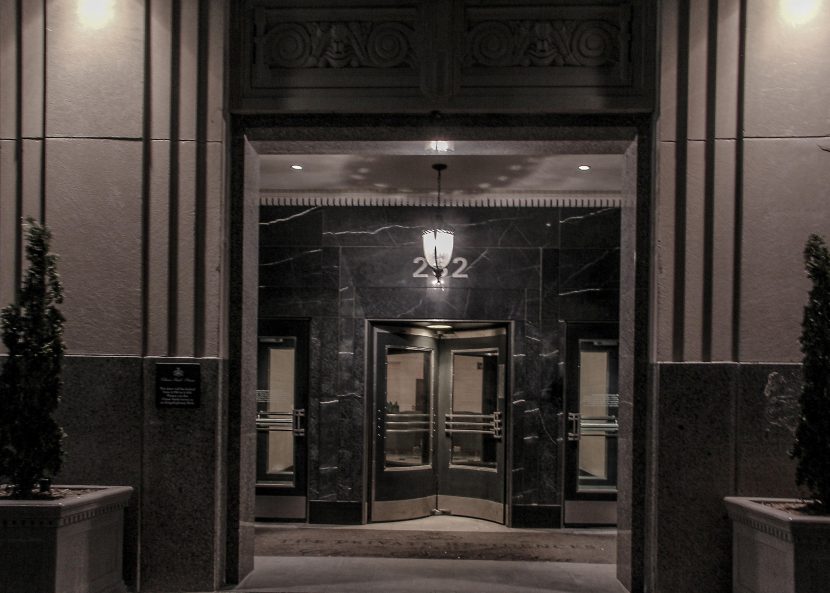I have always been a little perplexed by statues commemorating some historical figure. Public memorials to long dead people who may or may not have done what the memorials claim for them seem dubious at the outset. A form of idolatry, though not in a religious sense (not for me). The commemoration has less, it seems to me, to do with who these people were than what they represent for the people putting up the statues.
Abstract statues are different. The soldiers in certain war memorials, who, while perhaps based on living people, are not of said people. They embody All Who Were Concerned and go to the events memorialized.
Of course, certain statues of specific people over time become abstractions in much the same way. Enough time passes, few know who that person was, its place in public life changes and its meaning shifts. It stops being about the person, even about the history, and becomes decoration. At best a distillation of some collection of civic sentiments having virtually nothing to do with what it was intended to represent.
Along comes a sudden awakening of that same public consciousness and revelations emerge as to who and what that statue was all about when it was erected and now we are divided over what to do. Just as these monuments were almost never about the people depicted but about the sentiment of those creating the memorial, so too are our deliberations about what to do with them now that the underlying history has become very publicly visible. It’s less about the memorial than about current sentiment.
Now before anyone thinks I may be about to dismiss that current sentiment, let me put it to the forum: if the contemporary sentiment was valid enough at the time to serve as justification for erecting a memorial, why should present sentiment be in any way less valid as justification for removing them?
We’ve changed. Our values are expressed differently. It is completely understandable that what was held up as representative of who we were once should no longer represent what we are now. Statues to Confederate “heroes” should rightly be reassessed and dealt with accordingly, especially as the history of the memorials shows us that when and under what circumstances said memorials were erected had virtually nothing to do with the persons depicted. The vast majority were reimaginings, revisionist representations of glamorized if not outright false characterizations of actual history. In a very real sense, many of them are simply lies.
As are most such things, if we dig deeply enough.
Sometimes it’s just a matter of sanding off rough edges. Sometimes it’s a complete rehabilitation
But there are also those which have aged out of any relevance other than the æsthetic impact of the work itself. (The outrage the world felt at the Taliban destroying the Buddhas in Afghanistan was driven not because of who or what Buddha may have been but because those statues had become a cultural touchstone as works of art.)
The question is, how long is long enough to distance a piece of art from the shortcomings of its source material.
When, in other words, does a monument lose its original intent and become a part of culture apart from that origin?
Take the latest debate in my hometown over a statue of Louis IX. St. Louis. It stands before the main entrance of the St.Louis Art Museum, a noble figure atop a horse, right arm raised bearing a sword. (The sword was stolen at one point and recovered after a much publicized hunt. I may be misremembering, but when it was put back, it was done so upside down, which made the sword over into a cross, but that could just be my faulty memory.) There is now a debate about removing it because—
Well, because Louis IX was an anti-Semite and led two Crusades and burned books. (He is the only French monarch to ever be canonized, which suggests that all these traits were at the time seen as positives.) He died in 1270. Because of his sainthood, place-naming in his “honor” became popular.
The town of St. Louis was founded in 1763, almost half-a-millennium after his death.
I doubt many of those first colonists knew the details of his actual life. Even less do I think my contemporaries know much about him or have even given him a second thought. The statue is cool in a kind of Victorian bronze-revivalist way. At the time of my hometown’s founding, Louis XV was on the throne, soon to be dead and succeeded by his son who would be beheaded by the revolutionaries in Paris. If anything, the naming was as much in his honor as the reigning French monarch with a nod to the Catholic Church through the only sainted king. In other words, purely political.
In what way is the life and opinions of a 750 year dead French king relevant to the current spate of monument removals?
Obviously, his life and deeds are in many ways odious to contemporary sensibilities. But the fact is, he was completely one with his time and place. He exemplified mainstream European thought. Catholic Europe was almost entirely anti-Semitic and the Crusades were popular as ideas (if not as actual enterprises, since by Louis IX’s time they were beginning to show signs of stress). He expanded the Inquisition in France and he burned the Talmud. Few if any of those for whom he was a leader gainsayed any of this.
The same cannot be said of the Confederate leaders. The debate among those who clearly identified as mainstream was heated, public, and led to actions not supported unilaterally at the time, and constituted a repudiation of certain ideas and actions which were under question and which would soon lose to a groundswell of moral reaction. Monuments to the leaders of the rebellion are political statements in ways the statue of Louis IX simply isn’t, nor was when erected. In short, the statue of Louis IX is an abstraction as opposed to a statue to Robert E. Lee, which was not and is not today. Louis IX has become a malleable nonspecific symbol representing another abstraction, namely the place-name of a city which is itself become dissociated from its origins by virtue of changing hands thrice.
In case there is any doubt of my motives, I intend only to shed a light on causes and impulses. We’re caught up right now in a spate of trying to redress grievances. A perfectly legitimate movement and in many cases long overdue. Personally, I never did understand the whole Christopher Columbus thing. He bumped into the Western Hemisphere expecting to land somewhere else and then set about acting the power-mad little tyrant until his titles were stripped. A good navigator who still got he actual size of the planet wrong and managed to not only unleash misery and desolation on the natives he found but got a lot of his own people killed as well. All in all, a serious screw-up. The continents weren’t named after him but after a mapmaker, so I always wondered, after learning a bit about him, why the veneration? His only significant legacy was the establishment and justification of trans-Atlantic chattel bondage and the introduction of syphilis to Europe. Why anyone put statues up to him in the first place (here) always baffled me. He hadn’t been the first one from over there to find this side of the world and he wouldn’t have been the last. In my opinion, his idolization was a species of self-congratulatory holiday creation, an excuse for a celebration (of what?) and a propaganda tool to flense the past of dubious aspects in the name of making a “purer” set of founding myths. Motives should be questioned at all levels.
Perhaps it ought to be considered that hagiography ought not be allowed in public memorials. Abstract sculptures, idealized forms, universal archetypes, fine. We can argue over ideas and representational elements. But to cast a statue in the form of an individual for things which may be of dubious moral provenance is probably a bad idea, with very rare exceptions. (What is done privately, on private land, is another matter.)
But there is also the question of actual relevance, both pro and con, when it comes to revising our national ethos. Making snap decisions resulting in vandalism and arbitrarily lumping certain styles and periods into a one-size-fits-all reaction may not be the smartest thing. (Ulysses S. Grant and Robert E. Lee represent very different legacies, but if you don’t know history—and, lord, so many people don’t know history—then it might appear that tearing them both down for a single reason is justified.
For myself, I have serious problems with the whole idea of veneration. This country is not a theocracy, erecting statues to our presumptive “saints” is not a tradition I care to support. Famous for being famous does not merit a public monument on public grounds, especially given that what may actually be the reason for praise does not equal the sum or even much of a part of the individual. (As I say, what is done privately, on private grounds, is different.)
And it is all propaganda. Consider: the Russians understand this very well, which is why after the collapse of the U.S.S.R. all the public monuments to “great” Soviet leaders were removed and stored in “graveyards.” They knew that in order to move on, they had to rid themselves of the visible instantiations of a past no longer valid for them. They couldn’t do that with all those dead ideologues watching them from every public building, park, and square. Such things matter.
There will, however, be those instances where the object in question no longer has that function. It has become a work of art, apart from, severed, from what it may once have represented, and now is just a thing of beauty (depending on one’s taste).
We have the relative luxury of knowing the history and provenance of all those Confederate statues. We don’t have to guess at why they were made and placed where they are. Remove them, by all means. They are propaganda of the most base sort.
Remove Louis IX as well, if must be. But Europe didn’t even know this side of the world was here when he was a monarch and his policies, while in many ways repugnant, are not the stuff of current controversy. His statue symbolizes nothing (to me) beyond a naming protocol for a new town and his legacy…well, I suppose one could make an argument that he was one of a thousand years of ecclesiastical abuse and moral dubeity, but I can think of many closer to our time far more worthy of repudiation, none of whom (probably) took any inspiration from a 13th Century Crusader who died of dysentery.
He was a patron of the arts, though, and credited with revitalizing architecture in France and contributing to the Gothic school. Which is one reason his statue is in front of an art museum.
And it is a cool statue.





